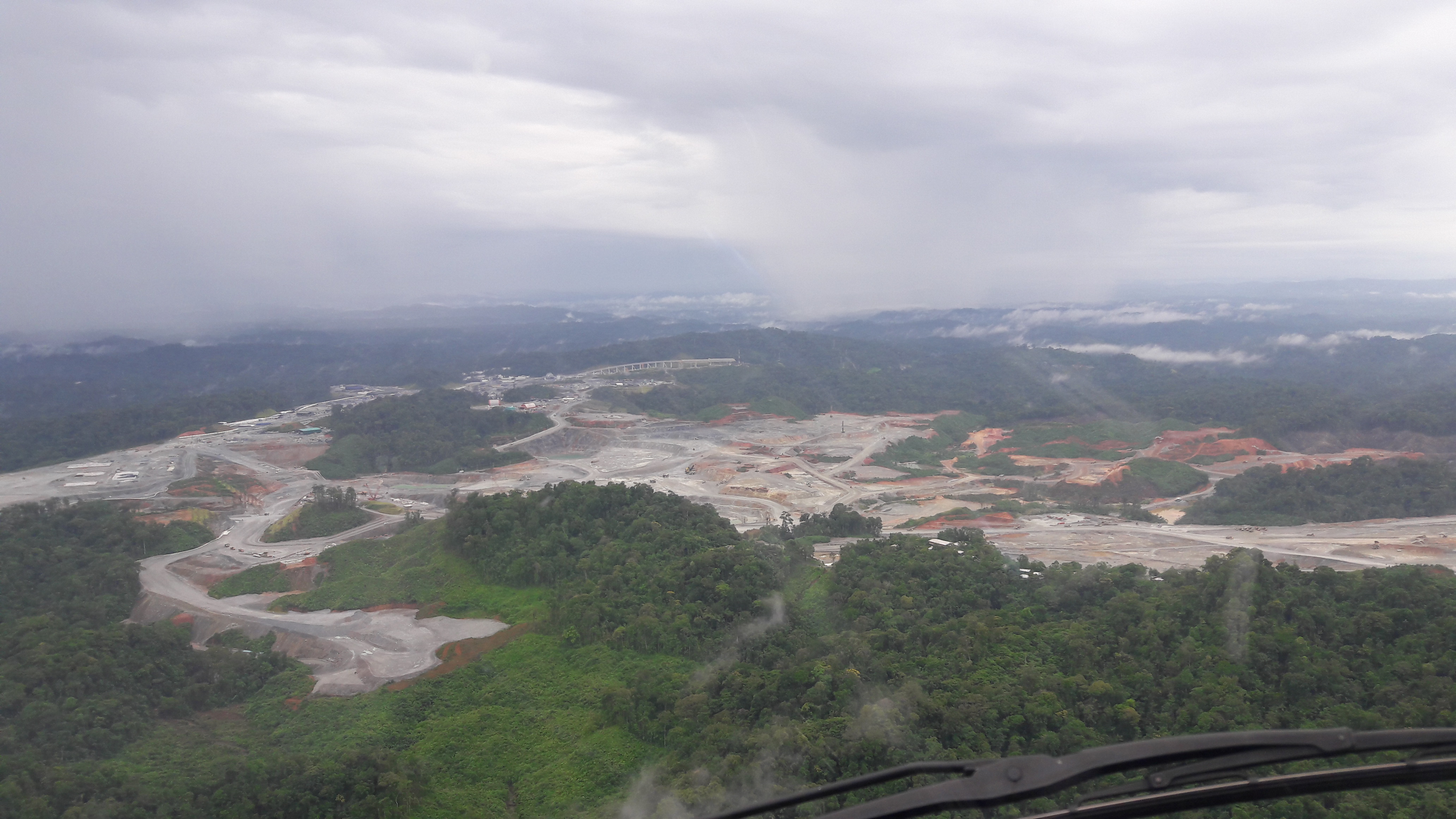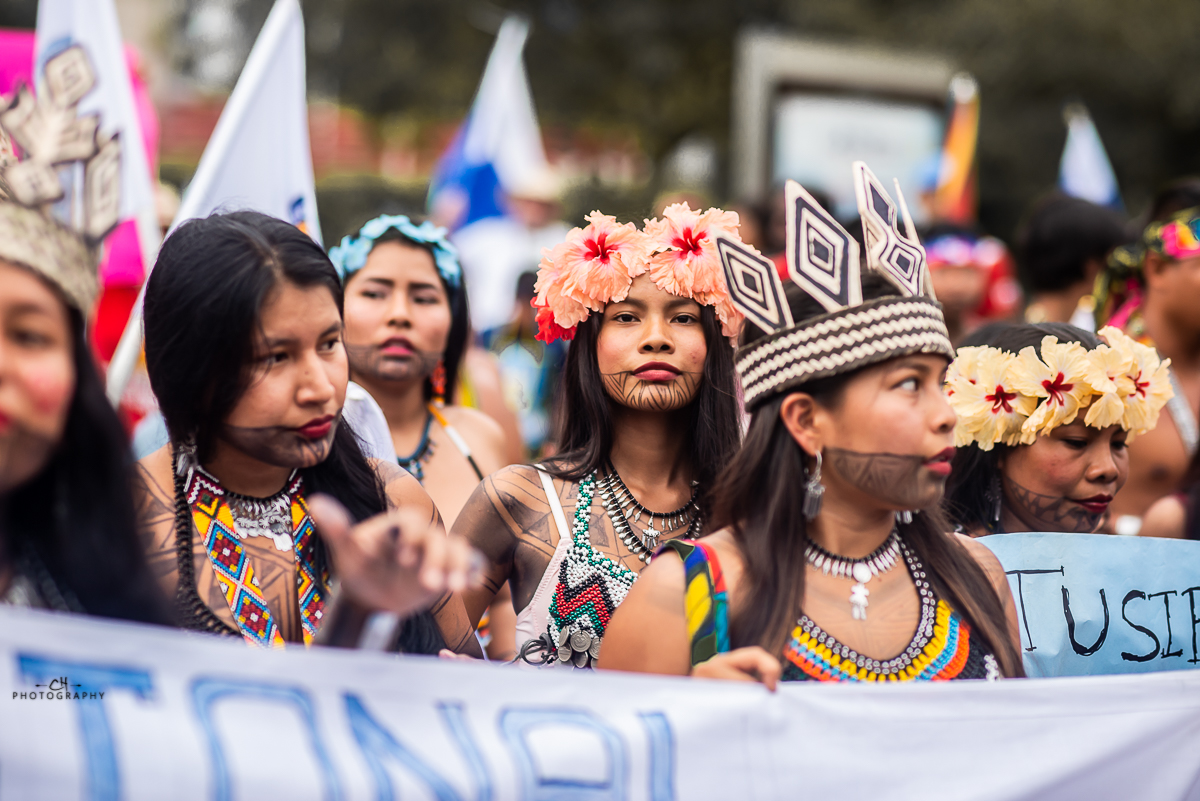Coalition joins Panamanians across the country in urging Supreme Court to reject Central America’s largest open-pit copper mine
On November 24, Panama’s Supreme Court will decide the future of an open-pit mine bigger than Manhattan that continues to endanger the rights, health and livelihoods of local communities; threatens an irreplaceable place that is critical for biodiversity and climate; and has been the focus of the historic country-wide protests since mid-October.
A group of international and local conservation organizations and activists today joins the overwhelming majority of the country in opposing the 50-square-mile (13,000 hectare) copper, gold, silver and molybdenum mine, which is operated by Minera Panamá, a subsidiary of Canadian company First Quantum Minerals. Together Sociedad Audubon de Panamá, ADOPTA Bosque Panamá, Panamá Sostenible, Centro de Incidencia Ambiental (CIAM Panama), Re:wild, the Amphibian Survival Alliance, Synchronicity Earth, WWF, American Bird Conservancy, and the IUCN SSC Amphibian Specialist Group join Panama’s local and Indigenous communities in urging the Supreme Court to follow the law and declare the new contract with Minera Panamá unconstitutional.
“When all this nature is contaminated, we all die,” said Rengifo Navas Revilla (who goes by Sagla Dummad), secretary of the National Coordinator of Indigenous Peoples of Panama (COONAPIP) and a leader in Panama’s Guna Indigenous community. “Even the planet itself, even Mother Earth herself, dies. This is the principle that has been instilled in us and that is why we continue to fight. This is why we Indigenous peoples are asking the Supreme Court to declare this law unconstitutional.”
The Minera Panamá project is located in the province of Colón, in the Donoso Protected Area, which is within the globally important Golfo de los Mosquitos Forests Key Biodiversity Area. Key Biodiversity Areas (KBAs) are sites critical to the global persistence of biodiversity and the health of the planet. The Panamanian government is bound by law to safeguard protected areas like Donoso. Panama’s Congress and President Laurentino Cortizo Cohen recently awarded a new contract to Minera Panamá to continue its operations after a first Supreme Court decision declared the previous contract violated the constitution.
More than 1,000 species of wildlife live in the Donoso Protected Area, many of which are threatened with extinction, according to the IUCN Red List of Threatened Species. This includes the great green macaw, Baird’s tapir, Central American spider monkey, jaguar, harpy eagle (Panama’s national bird), horned marsupial frog, and the critically endangered Gemini’s dart frog (Andinobates geminisae), a species only described in 2014 and whose entire known habitat is in the Donoso Protected Area, near the mining project. Because of this species, the Golfo de los Mosquitos Forests KBA is also recognized as an Alliance for Zero Extinction site, the most irreplaceable subset of Key Biodiversity Areas. A small group of Gemini’s dart frogs were first brought into a conservation breeding program in 2014, but there have been no scientific records of the species since 2018.
“Unfortunately, after its last assessment in 2018, five years of continual mining operations have taken place so close to the last-known remaining population of this species, therefore, we aren’t sure how many–if any–individuals are left and urgently need to assess the status of the frog in the wild,” said Gina Della Togna, executive director of the Amphibian Survival Alliance. “We call upon all national and international stakeholders to come together to find sustainable solutions that prioritize the protection of the Gemini’s dart frog and this invaluable ecosystem.”

Donoso Protected Area (from the archives of TV indígena and waguafilms)
The mine is also located in the heart of the Panama Atlantic Mesoamerican Biological Corridor, which connects wildlife habitat in seven countries of Central America to southern Mexico. Ecological corridors are critical for animals to be able to move to find food, habitat and mates. A road that was built for the mine crosses the corridor, disrupting the connectivity of forests in the region. More than 11.6 square miles (3,000 hectares) of forest have already been destroyed for the construction and operation of the mine.
“The area to be destroyed by this mining contract is one of the most biodiverse and least-known rainforests in all of Panama,” said Guido Berguido, a Panamanian biologist and executive director of Adopta Bosque Panamá. “Just this year a new species in the Brazilnut family (Eschweilera magnifica) was described from the mine site, and other species of plants and animals are being described as we speak. Our greatest fear is that, with current deforestation and the projected expansion of the mining operation, some wildlife species may go extinct before they are even discovered.”
According to the science-based organization, Science in Panama, open-pit mining can generate both significant air pollution that can cause severe respiratory illnesses in people, and waste rock that contains heavy metals that are washed away and can contaminate nearby waters. When the water polluted with heavy metals is consumed, it can result in neurological damage, cancer and other health challenges. Mines also release 1.4 times more particulate matter into nearby communities compared to non-mining sites. Particulate matter is especially damaging to the immature lungs of children and can result in death.
The original concession for the mine was granted in 1997 and went through two previous owners before First Quantum Minerals took over in 2013, inheriting the original contract. In 2009, two lawsuits were filed over the constitutionality of the original contract. In 2017, Panama’s Supreme Court ruled that the original concession was unconstitutional in part because it was granted without the proper bidding process in place.

Panama protests. Photo @enlayesk507.
Despite the ruling, the company began exporting copper in 2019. First Quantum negotiated a new contract to continue operations and add an additional 15.4 square miles (4,000 hectares) to the size of the project, which Congress approved and President Cortizo signed into contract-law on Oct. 20, 2023, which is when the protests across the country escalated.
Now all eyes are on the Supreme Court, which has received nine lawsuits around the constitutionality of the contract. Its decision could quash the contract. The court, which publicly assigned top priority to this case, has said that it will announce its decision about the first cases on Nov. 24, one day after the 10-day period for interested parties to submit comments closes.
Congress and the president approved the contract-law a little more than one year after Panama’s National Assembly and President Cortizo signed legislation granting nature “the right to exist, persist and regenerate its life cycles.” According to the law, which went into effect earlier this year, Panama’s parliament must consider the impact of its policies on nature.
“Panama is an example of the growing desire of Mesoamerican peoples to protect biodiversity and develop sustainable economic alternatives that move away from extractive industry and deforestation,” said Esteban Brenes-Mora, Re:wild senior Mesoamerica associate. “The people of Panama see the value of nature and are standing up for their rights and the rights of their wildlife and wildlands. Now we hope the Supreme Court judges will do the same and protect an ecosystem that is critical for people, wildlife and a stable climate.”
Photo: Gemini’s Dart Frog (Andinobates geminisae) © Jaime Culebras / @photowildlifetours


